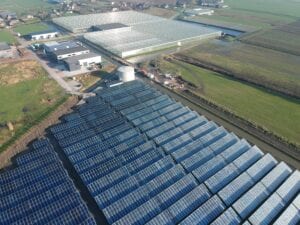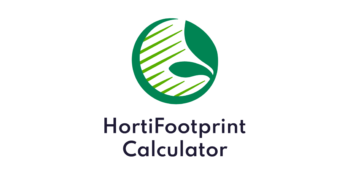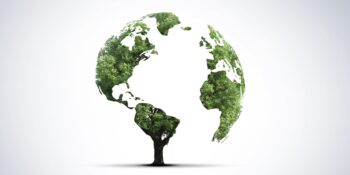This website uses cookies so that we can provide you with the best user experience possible. Cookie information is stored in your browser and performs functions such as recognising you when you return to our website and helping our team to understand which sections of the website you find most interesting and useful.
To reduce the use of fossil energy to zero – that is the ambition of the greenhouse horticulture sector. Alongside geothermal heat and bioenergy, solar energy plays an essential part in achieving this. A total of 9,300 square metres of solar panels were recently installed by G2 Energy, delivering heat to the nearby greenhouses of Tesselaar Freesia. This is the largest solar thermal project in the Dutch greenhouse horticulture sector to date. At the recent HortiContact trade show we spoke with Kees Molenaar, account manager at G2 Energy. “Sooner or later we will have to stop using gas, and that’s something horticultural businesses are well aware of. We believe the future lies in solar energy.”

Photo credit: G2 Energy
The Dutch company Tesselaar Freesia, located in Heerhugowaard, has been an MPS-ABC participant since 2007 and is rated A+. This means that they not only score highly in terms of energy but that their use of plant protection products and fertilisers is also sustainable. “I won’t lie – I am an entrepreneur first and foremost. And if I can couple that with the principles of sustainable entrepreneurship, then that can only be a good thing,” says Pip Tesselaar, owner of Tesselaar Freesia. “Ultimately, installing solar panels will also have a positive impact on our costs.”
Soil quality
When constructing a solar heat park, it is important that the soil and biodiversity are taken into account. According to Wageningen University & Research (WUR), it is crucial that there is sufficient light and water on the soil. This is determined by the number of panels, the height and the angle of inclination of the panels. “The panels at Freesia Tesselaar are positioned in such a way that sufficient light falls under the panels,” says Molenaar. “There is space between the panels and they are placed at an angle. We also sowed grass and there are sheep under the panels. In this way we try to keep the soil quality good. ”
Three hundred households
The amount of heat the panels generate is the equivalent of what three hundred households use in a year. In total, 550,000 cubic metres of gas can be saved this way. “We have stopped using gas entirely,” Pip Tesselaar reveals. “The solar thermal park delivers warm water at 50-60°C, which we use to heat the greenhouse. We store any surpluses in the ground using seasonal thermal energy storage (STES).” In cold months this heat is pumped up to the surface and warmed up to 45-50°C by a heat pump.
If you are committed to running your business sustainably, you can’t use glycol
Tesselaar has stopped using gas but still uses mains electricity for his heat pumps and lighting. In late 2019 the Dutch government approved a 177% higher Sustainable Energy Surcharge (Opslag Duurzame Energie, ODE) for mains electricity, which pushed up the price of mains electricity quite significantly. “We all want to move away from gas, but now I would be better off installing a CHP. It’s unbelievable what has happened here.”
1.5 times the size
Solar panels from G2 Energy have other sustainability credentials too: they run on water and contain no glycol. Molenaar: “If you are committed to running your business sustainably, you can’t use glycol. If a solar panel leaks – and that’s not impossible with a life span of 30 years – then glycol escapes into the ground, and you don’t want that, particularly if there are crops growing nearby.”
Despite the higher ODE, there are more solar thermal parks in the pipeline. “We are currently working on an installation for the Mol Freesia nursery (picture above) that will be 1.5 times the size of the Freesia Tesselaar system,” Molenaar says. “This grower will have moved away from gas soon too. This is yet more proof that solar energy is very much on the up.”




